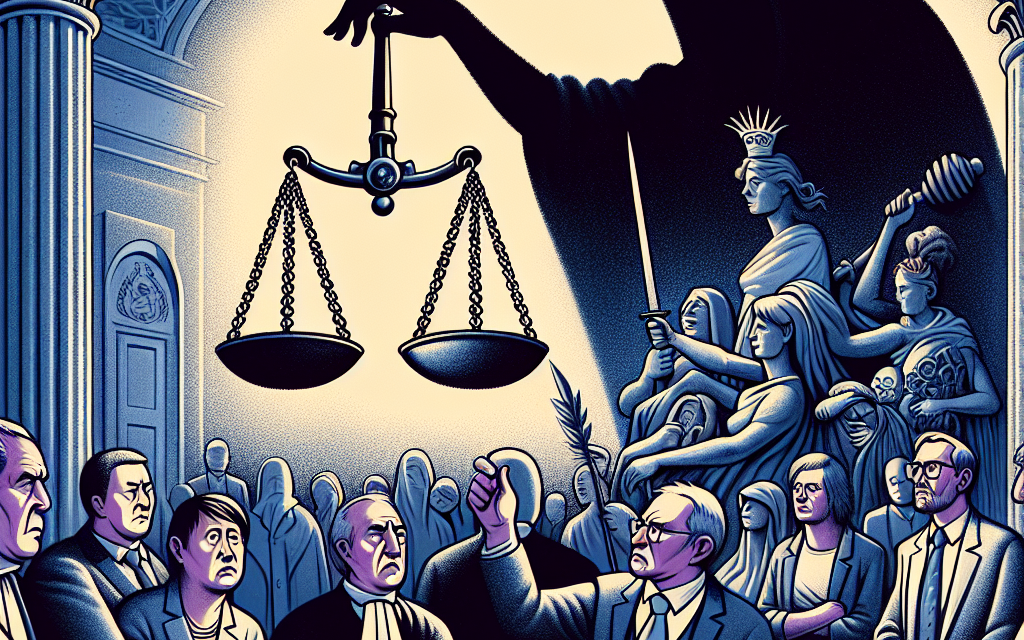DOJ Supports Providers in Lawsuit Against Claritev
The healthcare landscape is constantly evolving, and with it comes a myriad of legal challenges that can impact providers, patients, and the industry as a whole. One of the most significant recent developments is the lawsuit against Claritev, a healthcare technology company, which has garnered the attention of the Department of Justice (DOJ). This article delves into the details of the lawsuit, the DOJ’s involvement, and the broader implications for healthcare providers and the industry. We will explore five key subtopics: the background of the lawsuit, the role of the DOJ, the implications for healthcare providers, the potential outcomes of the case, and the future of healthcare technology regulation.
Background of the Lawsuit
The lawsuit against Claritev stems from allegations of fraudulent practices and violations of healthcare regulations. Claritev, known for its innovative healthcare solutions, has been accused of misleading providers and patients regarding the efficacy and safety of its products. The origins of the lawsuit can be traced back to a series of complaints filed by healthcare providers who claimed that Claritev’s marketing practices were deceptive and that their products did not deliver the promised results.
In 2022, several providers banded together to file a lawsuit against Claritev, citing violations of the False Claims Act. This act is designed to combat fraud against government programs, including Medicare and Medicaid. The providers alleged that Claritev knowingly submitted false claims for reimbursement, which not only harmed their practices but also jeopardized patient care.
Key allegations in the lawsuit include:
- Misrepresentation of product capabilities and outcomes.
- Failure to disclose potential risks associated with their products.
- Engaging in aggressive marketing tactics that pressured providers to adopt their technology without adequate training or support.
The lawsuit has drawn significant media attention, highlighting the ongoing struggle between healthcare providers and technology companies. As the healthcare industry increasingly relies on technology to improve patient outcomes, the need for transparency and accountability has never been more critical.
The Role of the DOJ
The involvement of the Department of Justice in this case marks a significant turning point. The DOJ has a vested interest in ensuring that healthcare providers are protected from fraudulent practices that can undermine the integrity of the healthcare system. By supporting the providers in their lawsuit against Claritev, the DOJ is sending a clear message that it will not tolerate deceptive practices in the healthcare industry.
The DOJ’s support comes in the form of legal resources, expert testimony, and potential intervention in the case. This involvement is crucial for several reasons:
- Strengthening the Case: The DOJ’s backing lends credibility to the providers’ claims, making it more difficult for Claritev to dismiss the allegations.
- Resource Allocation: The DOJ has access to extensive resources and expertise that can help build a stronger case against Claritev.
- Deterrent Effect: The DOJ’s involvement serves as a deterrent to other companies that may engage in similar fraudulent practices.
Furthermore, the DOJ’s support highlights the importance of regulatory oversight in the healthcare technology sector. As technology continues to advance, the potential for misuse and fraud increases, necessitating a robust regulatory framework to protect providers and patients alike.
Implications for Healthcare Providers
The lawsuit against Claritev has far-reaching implications for healthcare providers across the country. As the case unfolds, providers must navigate a complex landscape of legal, ethical, and operational challenges. Here are some key implications:
- Increased Scrutiny: Providers may face increased scrutiny regarding their relationships with technology companies. This could lead to more rigorous vetting processes and a reevaluation of existing contracts.
- Financial Impact: If the lawsuit results in significant penalties for Claritev, providers may see a shift in the market, potentially leading to increased costs for technology solutions.
- Patient Trust: The allegations against Claritev could erode patient trust in healthcare technology. Providers must work diligently to reassure patients about the safety and efficacy of the technologies they use.
Moreover, the case serves as a wake-up call for providers to prioritize due diligence when selecting technology partners. Providers must ensure that they are not only compliant with regulations but also aligned with ethical practices that prioritize patient care.
Potential Outcomes of the Case
The outcome of the lawsuit against Claritev could set a precedent for future cases involving healthcare technology companies. Several potential outcomes could arise from this legal battle:
- Settlement: One possible outcome is a settlement between Claritev and the providers. This could involve financial compensation for the providers and changes to Claritev’s business practices.
- Judgment in Favor of Providers: If the court finds in favor of the providers, Claritev could face significant penalties, including fines and restrictions on its business operations.
- Judgment in Favor of Claritev: Conversely, if the court rules in favor of Claritev, it could embolden other technology companies to engage in similar practices without fear of legal repercussions.
Regardless of the outcome, the case will likely prompt a reevaluation of regulatory frameworks governing healthcare technology. Policymakers may be compelled to introduce new regulations aimed at increasing transparency and accountability in the industry.
The Future of Healthcare Technology Regulation
The lawsuit against Claritev underscores the urgent need for comprehensive regulation in the healthcare technology sector. As technology continues to evolve, so too must the regulatory frameworks that govern its use. Several key areas require attention:
- Transparency Requirements: Regulations should mandate that technology companies provide clear and accurate information about their products, including potential risks and limitations.
- Accountability Measures: Companies should be held accountable for misleading marketing practices, with penalties for those found to engage in fraud.
- Provider Education: Regulations should include provisions for educating healthcare providers about the technologies they use, ensuring they are equipped to make informed decisions.
Additionally, collaboration between technology companies, healthcare providers, and regulatory bodies will be essential in shaping the future of healthcare technology. By working together, stakeholders can create an environment that fosters innovation while prioritizing patient safety and care quality.
Conclusion
The lawsuit against Claritev, supported by the DOJ, represents a critical moment in the intersection of healthcare and technology. As the case unfolds, it highlights the importance of transparency, accountability, and ethical practices in the healthcare technology sector. For providers, the implications are profound, necessitating a reevaluation of partnerships and practices to ensure patient trust and care quality.
As we look to the future, the need for robust regulatory frameworks becomes increasingly clear. The outcomes of this case could set important precedents that shape the landscape of healthcare technology for years to come. Ultimately, the focus must remain on safeguarding patient care and ensuring that technology serves as a tool for improvement rather than a source of deception.





